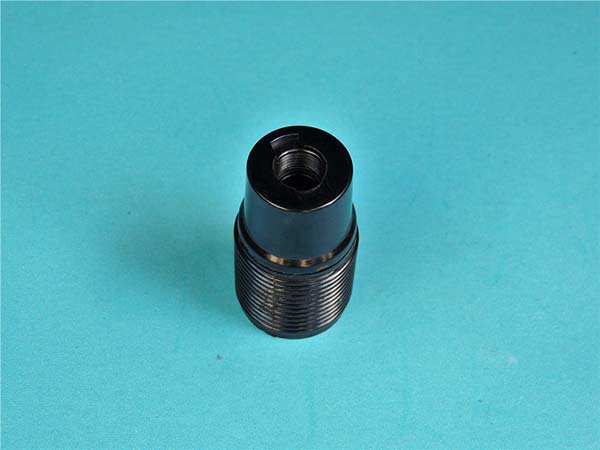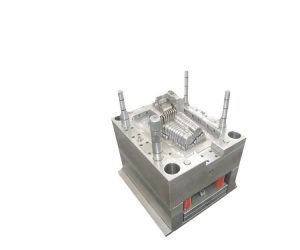1. Introduction
In the realm of materials engineering, bakelite plastic material has held a significant position for over a century. First synthesized in 1907 by Leo Baekeland, bakelite was the world's first synthetic plastic. Its introduction revolutionized manufacturing processes across various industries. But in today's market, filled with a plethora of advanced materials, the question arises: is bakelite plastic material still relevant, and more importantly, is it the right choice for your projects? Yigu Technology aims to provide a comprehensive overview, helping you make an informed decision.
2. Understanding Bakelite Plastic Material
2.1 Chemical Composition and Structure
Bakelite is a thermosetting plastic formed through the polymerization of phenol and formaldehyde under heat and pressure. The resulting three - dimensional cross - linked structure of phenolic resin molecules gives bakelite its unique properties. This cross - linking is what differentiates thermosetting plastics like bakelite from thermoplastics, which can be melted and reshaped multiple times. Once bakelite is cured, it cannot be remelted or reshaped without destroying its chemical structure.
2.2 Physical and Mechanical Properties
| Property | Value/Description |
| Density | Approximately \(1.3 - 1.4\ g/cm^3\), which is relatively high compared to some common plastics like polyethylene (\(0.91 - 0.97\ g/cm^3\)) |
| Hardness | Exhibits high hardness, with a Shore D hardness typically in the range of 85 - 90. This makes it resistant to scratches and abrasion. |
| Tensile Strength | Can range from 30 - 50 MPa, depending on the formulation and processing. It offers decent strength for many applications. |
| Compressive Strength | Usually higher than its tensile strength, often in the range of 100 - 200 MPa, allowing it to withstand significant compressive forces. |
| Heat Resistance | Bakelite has excellent heat resistance. It can typically operate at temperatures up to 150 - 200 °C without significant degradation of its mechanical properties. Some specialized formulations can even withstand higher temperatures for short periods. |
2.3 Electrical Properties
| Property | Value/Description |
| Electrical Insulation Resistance | Bakelite has extremely high electrical insulation resistance, typically in the range of \(10^{12}-10^{14}\Omega\cdot cm\). This makes it an ideal material for electrical insulation applications. |
| Dielectric Strength | It can withstand high voltages, with a dielectric strength of 10 - 30 kV/mm, depending on the thickness and quality of the material. |
| Dielectric Constant | The dielectric constant of bakelite is around 4 - 5, which is relatively stable over a wide range of frequencies. This property is important for applications in electrical and electronic components. |
2.4 Chemical Resistance
Bakelite shows good resistance to many common chemicals. It can withstand exposure to acids, alkalis, and organic solvents to a certain extent. For Yigu Technology example, it is resistant to dilute acids and alkalis at room temperature. However, like any material, its chemical resistance has limits. Concentrated acids or strong oxidizing agents can gradually degrade bakelite over time.
3. Applications of Bakelite Plastic Material
3.1 Electrical and Electronic Industry
3.1.1 Insulators
In electrical power systems, bakelite is widely used as an insulator. Its high electrical insulation resistance and dielectric strength make it suitable for applications such as switchgear insulators, transformer bushings, and electrical connectors. For instance, in high - voltage switchgear, bakelite insulators ensure that electrical current is properly contained and directed, preventing leakage and short - circuits.
3.1.2 Circuit Boards
Bakelite - based circuit boards were popular in the early days of electronics. Although modern electronics often use fiberglass - epoxy (FR - 4) circuit boards for their higher performance, bakelite circuit boards are still used in some low - cost and specialized applications. Their heat resistance can help dissipate heat generated by electronic components on the board.
3.2 Automotive Industry
3.2.1 Brake Components
Bakelite is used in the manufacturing of brake components such as brake pads and clutch facings. Its high heat resistance and good frictional properties make it suitable for these applications. When brakes are applied, a large amount of heat is generated. Bakelite can withstand this heat and maintain its structural integrity, ensuring reliable braking performance.
3.2.2 Interior Components
Some automotive interior components, like knobs and handles, are made of bakelite. Its hardness and aesthetic appeal, along with its ability to be molded into various shapes, make it a suitable choice for these applications.
3.3 Consumer Goods
3.3.1 Kitchenware
Bakelite has been used in kitchenware, such as pot handles and utensils. Its heat resistance allows it to withstand the high temperatures associated with cooking. For example, bakelite pot handles remain cool to the touch even when the pot is heated on the stove, providing safety for the user.
3.3.2 Jewelry and Decorative Items
Due to its ability to be molded into intricate shapes and its attractive appearance, bakelite is sometimes used in the production of jewelry and decorative items. Vintage bakelite jewelry is highly collectible, known for its unique colors and patterns.
4. Advantages of Bakelite Plastic Material
4.1 Cost - effectiveness
Bakelite is relatively inexpensive compared to some high - performance engineering plastics. The raw materials, phenol and formaldehyde, are widely available and cost - effective. This cost advantage makes it an attractive option for applications where cost is a significant factor, such as in some consumer goods and low - end industrial products.
4.2 Ease of Manufacturing
Bakelite can be easily processed using various molding techniques, such as compression molding and injection molding. This ease of manufacturing allows for the production of complex - shaped components with high precision. Manufacturers can produce a large number of consistent - quality products in a relatively short time, reducing production costs further.
4.3 Excellent Heat Resistance
As mentioned earlier, bakelite's ability to withstand high temperatures without significant degradation of its properties is a major advantage. This makes it suitable for applications where heat is a concern, such as in electrical components, automotive brake systems, and kitchenware.
4.4 Good Mechanical Properties
With its high hardness, decent tensile and compressive strength, bakelite can withstand mechanical stress in many applications. It is resistant to wear and abrasion, which is beneficial for components that are subject to friction or repeated use.
5. Disadvantages of Bakelite Plastic Material
5.1 Brittleness
One of the main drawbacks of bakelite is its brittleness. Under impact or excessive mechanical stress, it is prone to cracking or breaking. This can be a significant issue in applications where the components are likely to be subjected to physical abuse, such as in some portable devices or in environments with high vibrations.
5.2 Limited Color Options
Bakelite is typically available in a limited range of colors, mainly dark colors like black, brown, and dark red. This can be a disadvantage in applications where aesthetics are important and a wide range of colors is desired, such as in modern consumer electronics or interior design.
5.3 Environmental Concerns
Bakelite is a thermosetting plastic, which means it is difficult to recycle. Once it is formed, it cannot be melted and reformed into new products easily. When disposed of, it can contribute to environmental pollution. With the increasing emphasis on environmental sustainability, the non - recyclability of bakelite is becoming a more significant concern.
6. Comparison with Alternative Materials
6.1 Comparison with Polycarbonate
| Property | Baquelite | Polycarbonate |
| Impact Resistance | Low (brittle) | High, polycarbonate is known for its excellent impact resistance |
| Transparency | Usually opaque, limited transparency options | Can be highly transparent, with good optical clarity |
| Heat Resistance | Good, up to 150 - 200 °C | Also good, can withstand temperatures up to 130 - 140 °C continuously |
| Cost | Relatively low | Higher, due to more complex manufacturing processes and raw materials |
| Recycling | Difficult, non - recyclable in traditional ways | Can be recycled, although the process has its challenges |
6.2 Comparison with Fiberglass - Reinforced Plastics
| Property | Baquelite | Fiberglass - Reinforced Plastics |
| Strength - to - Weight Ratio | Moderate | High, fiberglass reinforcement significantly increases strength while maintaining a relatively low weight |
| Flexibility | Low, brittle | Can be adjusted depending on the resin and fiberglass content, generally more flexible than bakelite |
| Chemical Resistance | Good, but has limitations | Varies depending on the resin used, some formulations offer excellent chemical resistance |
| Cost | Lower for simple applications | Can be more expensive, especially for high - performance grades |
7. How to Choose Bakelite Plastic Material
7.1 Assess Your Application Requirements
The first step in choosing whether bakelite is the right material for your project is to assess your application requirements. Consider factors such as the operating temperature, mechanical stress, electrical properties needed, chemical exposure, and aesthetic requirements. If your application involves high temperatures, moderate mechanical stress, and cost is a key factor, bakelite may be a suitable choice. However, if high impact resistance or a wide range of color options are essential, you may need to look at alternative materials.
7.2 Evaluate Supplier Quality
When considering bakelite plastic material, it's crucial to evaluate the quality of the supplier. Look for suppliers with a good reputation in the industry, who can provide detailed technical data sheets about their products. Request samples and conduct your own tests if possible, especially for critical applications. A reliable supplier will also be able to offer support in terms of material selection and processing advice.
7.3 Consider Long - term Costs
Don't just focus on the initial cost of the bakelite material. Consider the long - term costs, including maintenance, replacement, and potential environmental costs. For example, if a bakelite component has a shorter lifespan due to its brittleness and needs to be replaced frequently, the overall cost may be higher than using a more expensive but more durable alternative.
8. Conclusion
Yigu Technology Bakelite plastic material has a rich history and offers several advantages, such as cost - effectiveness, excellent heat resistance, and good mechanical properties in certain aspects. It still finds applications in various industries today. However, it also has its limitations, including brittleness, limited color options, and environmental concerns. When choosing a material for your projects, it's essential to carefully weigh the pros and cons of bakelite against your specific requirements and compare it with alternative materials. By doing so, you can ensure that the material you select is the best fit for your project, both in terms of performance and cost - effectiveness.


